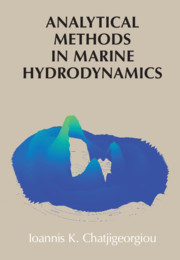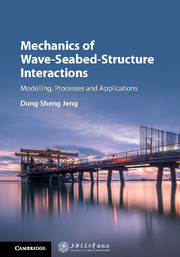3653 results in ebooks in fluid mechanics
References
-
- Book:
- Analytical Methods in Marine Hydrodynamics
- Published online:
- 27 June 2018
- Print publication:
- 12 July 2018, pp 489-508
-
- Chapter
- Export citation
Dedication
-
- Book:
- Analytical Methods in Marine Hydrodynamics
- Published online:
- 27 June 2018
- Print publication:
- 12 July 2018, pp ii-ii
-
- Chapter
- Export citation
Contents
-
- Book:
- Data-Driven Computational Methods
- Published online:
- 06 July 2018
- Print publication:
- 12 July 2018, pp vii-viii
-
- Chapter
- Export citation
Appendix H: - Analytical Formulae for Lamé Functions and Orthogonality Constants
-
- Book:
- Analytical Methods in Marine Hydrodynamics
- Published online:
- 27 June 2018
- Print publication:
- 12 July 2018, pp 449-455
-
- Chapter
- Export citation
2 - Markov-Chain Monte Carlo
-
- Book:
- Data-Driven Computational Methods
- Published online:
- 06 July 2018
- Print publication:
- 12 July 2018, pp 16-30
-
- Chapter
- Export citation
References
-
- Book:
- Data-Driven Computational Methods
- Published online:
- 06 July 2018
- Print publication:
- 12 July 2018, pp 149-156
-
- Chapter
- Export citation
Foreword
-
- Book:
- Analytical Methods in Marine Hydrodynamics
- Published online:
- 27 June 2018
- Print publication:
- 12 July 2018, pp ix-x
-
- Chapter
- Export citation
Appendix A - Elementary Probability Theory
-
- Book:
- Data-Driven Computational Methods
- Published online:
- 06 July 2018
- Print publication:
- 12 July 2018, pp 127-132
-
- Chapter
- Export citation
Appendix K: - Addition Theorems in Spheroidal Coordinates
-
- Book:
- Analytical Methods in Marine Hydrodynamics
- Published online:
- 27 June 2018
- Print publication:
- 12 July 2018, pp 464-474
-
- Chapter
- Export citation
Index
-
- Book:
- Data-Driven Computational Methods
- Published online:
- 06 July 2018
- Print publication:
- 12 July 2018, pp 157-158
-
- Chapter
- Export citation
Appendix G: - Unsteady Lagally Theorem for Solid Bodies
-
- Book:
- Analytical Methods in Marine Hydrodynamics
- Published online:
- 27 June 2018
- Print publication:
- 12 July 2018, pp 444-448
-
- Chapter
- Export citation

Data-Driven Computational Methods
- Parameter and Operator Estimations
-
- Published online:
- 06 July 2018
- Print publication:
- 12 July 2018

Analytical Methods in Marine Hydrodynamics
-
- Published online:
- 27 June 2018
- Print publication:
- 12 July 2018

Mechanics of Wave-Seabed-Structure Interactions
- Modelling, Processes and Applications
-
- Published online:
- 28 April 2018
- Print publication:
- 26 April 2018
Appendix C - Derivation of u–U Approximation (Cha et al. 2002)
-
- Book:
- Mechanics of Wave-Seabed-Structure Interactions
- Published online:
- 28 April 2018
- Print publication:
- 26 April 2018, pp 323-325
-
- Chapter
- Export citation
5 - Mechanics of Wave-Seabed-Pipeline Interactions
-
- Book:
- Mechanics of Wave-Seabed-Structure Interactions
- Published online:
- 28 April 2018
- Print publication:
- 26 April 2018, pp 177-234
-
- Chapter
- Export citation
1 - Overview
-
- Book:
- Mechanics of Wave-Seabed-Structure Interactions
- Published online:
- 28 April 2018
- Print publication:
- 26 April 2018, pp 1-33
-
- Chapter
- Export citation
Appendix D - Mathematical Derivations of Analytical Solutions for Residual Soil Response (Jeng et al. 2007)
-
- Book:
- Mechanics of Wave-Seabed-Structure Interactions
- Published online:
- 28 April 2018
- Print publication:
- 26 April 2018, pp 326-328
-
- Chapter
- Export citation
8 - Physical Modelling: One-Dimensional Compressive Tests
-
- Book:
- Mechanics of Wave-Seabed-Structure Interactions
- Published online:
- 28 April 2018
- Print publication:
- 26 April 2018, pp 285-315
-
- Chapter
- Export citation
Contents
-
- Book:
- Mechanics of Wave-Seabed-Structure Interactions
- Published online:
- 28 April 2018
- Print publication:
- 26 April 2018, pp v-x
-
- Chapter
- Export citation
